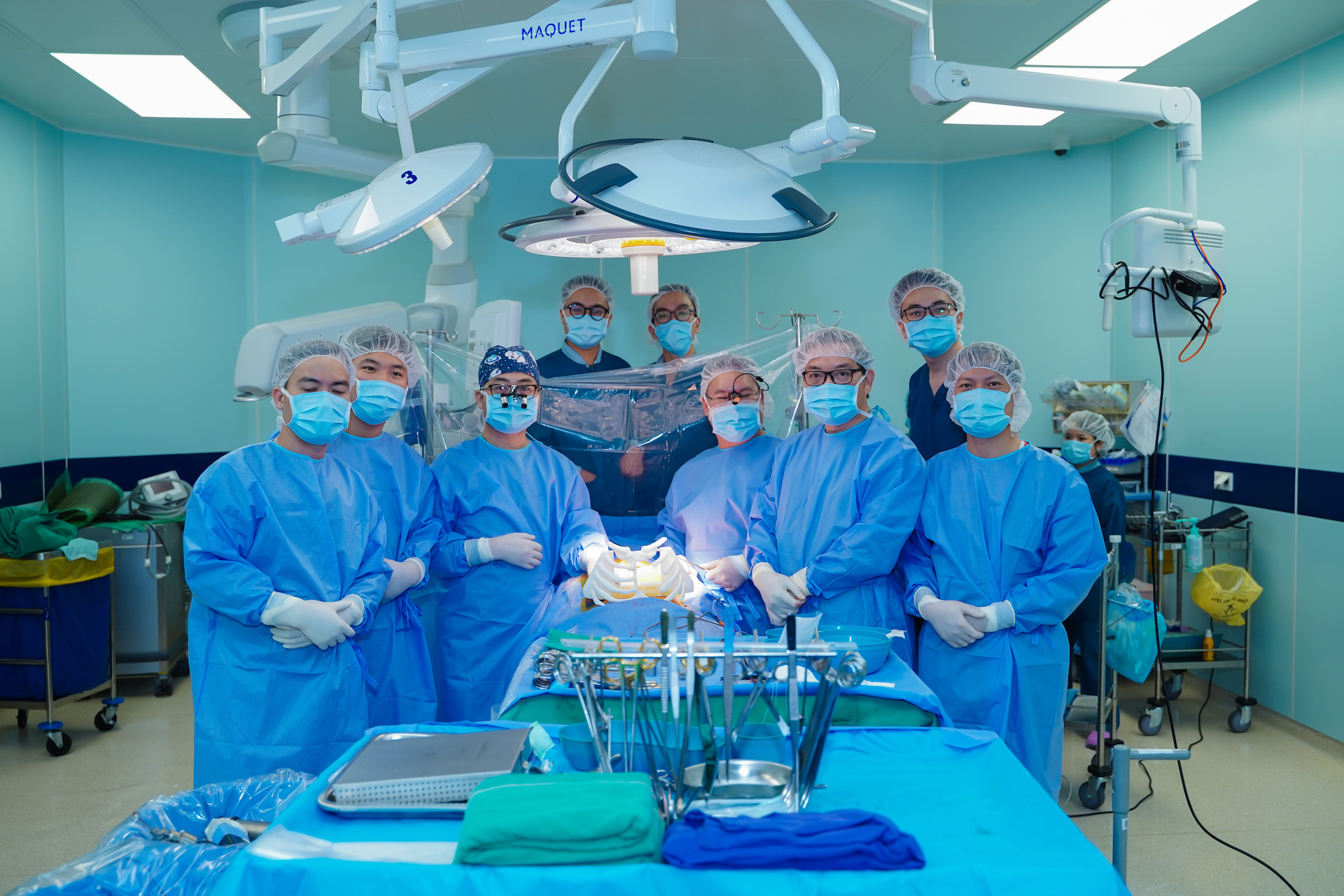In a landmark for medical innovation, Vietnam’s Vinmec Times City International Hospital has carried out Southeast Asia’s first chest wall reconstruction using a 3D-printed titanium implant. The operation, aimed at saving the life of a 55-year-old woman with a large, aggressive chest tumor, not only highlights the potential of 3D printing in medicine but also positions Vietnam as a regional leader in advanced surgical techniques.
The patient, who had been experiencing severe chest pain and restricted movement, was found to have an 11.5-centimeter tumor in her mediastinum, pressing against her heart and lungs. Traditional treatments like chemotherapy and radiation were not viable options due to the tumor’s advanced stage. Removing the tumor was risky but necessary, as it threatened her respiratory and cardiac functions. Once the tumor was removed, doctors faced the challenge of reconstructing the extensive chest wall defect to ensure that her breathing and heart function remained intact.

Turning to 3D printing for a life-saving solution
Chest wall reconstruction in Vietnam typically involves using muscle and skin grafts, which can leave scars and offer limited structural protection. In this case, however, Vinmec’s medical team, working alongside engineers from VinUniversity’s 3D Technology in Medicine Center, designed a custom-fit titanium implant that would go far beyond traditional methods in terms of durability, functionality, and protection.
Designing an implant for a constantly moving part of the body, like the chest, is highly complex,as the implant not only had to match her chest anatomy but also provide flexibility with each breath.
The custom titanium implant, fitted with a mesh to prevent lung hernia, addresses a common complication of chest wall reconstruction. Previous cases globally often required multiple implants to protect both the heart and lungs, which increased the surgery time and the risk of complications. Vinmec’s single, unified design simplified the procedure, ultimately improving the patient’s chances of a smooth recovery.
A successful outcome and rapid recovery
The surgery, which took place on September 11, lasted under three hours. After the tumor was removed, doctors fitted the implant with “pinpoint accuracy,” according to hospital sources. Within a day, the patient was able to stand and walk, reporting normal breathing. Just five days after the procedure, she was discharged, and three weeks post-surgery, she could walk over a mile daily with no respiratory limitations. This pace of recovery is notably faster than that observed in similar cases, underscoring the promise of 3D printing in complex surgeries.
Southeast Asia joins global innovation race in medical 3D printing
While the use of 3D printing for chest reconstruction remains rare, it is gaining traction in the U.S., Europe, and a handful of Asian countries. In the past decade, only around 50 cases worldwide have involved titanium 3D-printed chest implants, mainly in developed countries with high-tech medical infrastructure. With Vinmec’s achievement, Vietnam becomes the fourth country in Asia to use fully 3D-printed bone implants for cardiopulmonary protection. The success could pave the way for more hospitals in the region to explore similar high-tech surgical interventions.
Vinmec’s adoption of 3D printing is part of a broader movement within Vietnam’s healthcare system to embrace advanced medical technology, despite the significant cost and technical challenges involved. The country’s healthcare sector has gained recognition for its initiatives in medical tourism, stem cell treatments, and other specialized services. Vinmec, backed by Vingroup, has made strides in orthopedic and cardiac treatments, positioning itself as a hub for high-tech healthcare in Southeast Asia.
A test case for future treatments
Currently, Vinmec is exploring the use of 3D printing in other complex surgeries and treatments, with the hospital’s representatives hinting at plans to broaden the technology’s application. The success of this first case suggests that 3D-printed implants could become a standard tool in Vinmec’s repertoire, particularly for complex cases where traditional solutions fall short.
This success story also raises questions about whether more hospitals in Southeast Asia will invest in similar technologies, as they begin to see tangible examples of the potential life-saving impact. For now, Vinmec’s achievement serves as a proof of concept, showcasing the transformative potential of 3D printing in modern medicine — a shift that could redefine patient care standards across the region.

